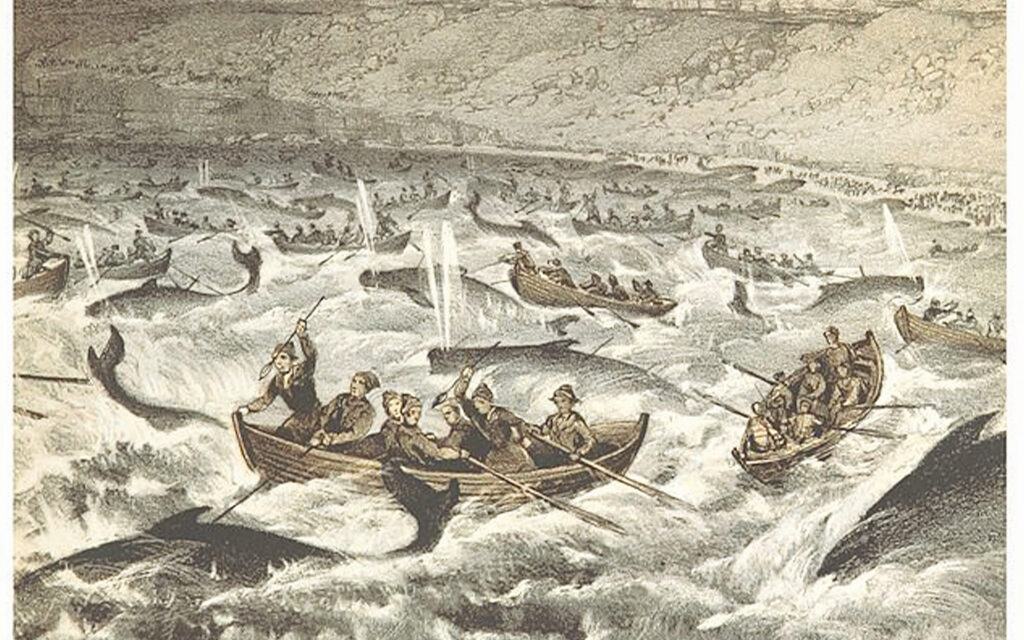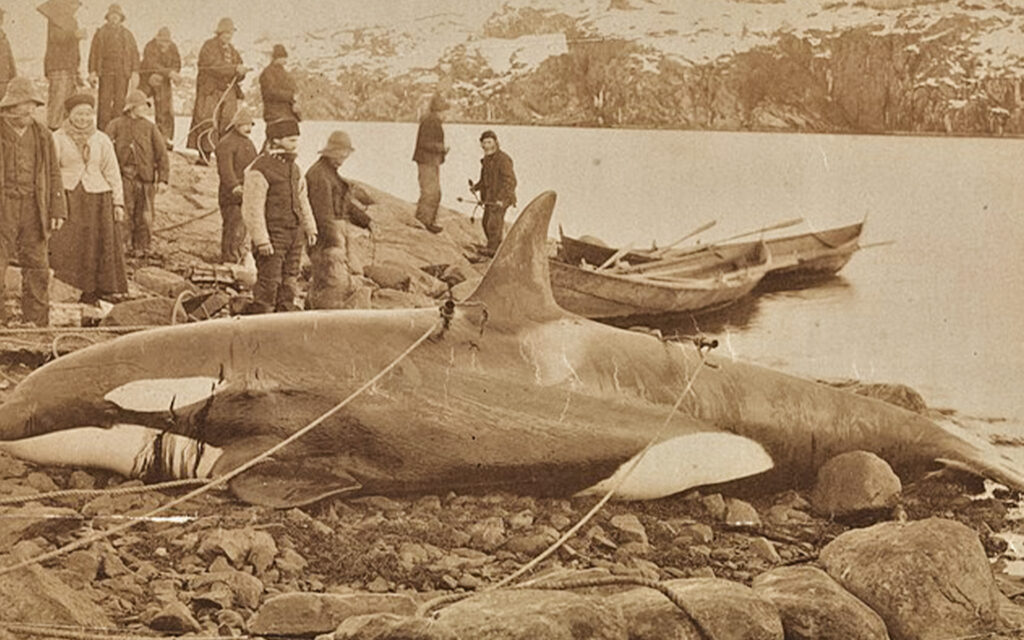Impressive fjords overlooking the Atlantic Ocean, mountains adorned with green cliffs, a pristine nature waiting to be discovered and explored in the incredible Faroe Islands. However, what is not mentioned in the tourist brochures is the ancient tradition that, sadly, makes them famous today: the slaughter of cetaceans.
The Grindadràp is a traditional whale hunt in the Nordic Faroe Islands dating back to 1584. Back then, Faroese hunters would catch whales to store their meat and blubber for the winter, when food was scarce. Men would descend the cliffs to kill the animals and then distribute them among all the inhabitants. Nowadays, in the 21st century, the Faroe Islands remain a fishing community, with the difference that there is no longer food scarcity during the winter. Whales are no longer considered food staples; in fact, authorities discourage their consumption due to their high mercury content.

If centuries ago hunting was done to survive, why should it continue if that need no longer exists? Currently, the slaughter of whales and dolphins is carried out in a much crueler manner. It is done simply to maintain a “tradition” whose objective is to kill as many cetaceans as possible. Local and state laws in the Faroe Islands support this bloody activity, as they classify this hunt as sustainable. However, it involves the killing of pilot whales and white Atlantic dolphins, internationally protected species. The dictates of the International Whaling Commission (IWC) are being violated.
From generation to generation
The Grindadràp takes place in summer, between July and August. In the last 40 years, an average of about 1,150 cetaceans have died each year, solely to maintain this ritual. 2021 was one of the bloodiest years, in which 1,428 white-sided dolphins and 667 whales were killed (data from Stop the Grind). In the face of this barbarity, the European Union expressed its disagreement, but EU law does not apply to the Faroe Islands. Therefore, it is difficult to prohibit this deeply ingrained practice. According to a survey published by the Kringvarp Føroya network, more than 83% of islanders still support the killing of pilot whales, but are against the slaughter of white-sided dolphins.
This massacre does not have a fixed date; it takes place during the summer months when cetaceans migrate. When the islanders spot these movements, they force the animals to swim to the shore, cornering them with boats. In this way, the whales and dolphins become stranded on the coast, struggling to swim. This allows the islanders to begin killing them one by one.

Slaughter technique
There is also a technique to prevent the animals from suffering too much… a mortal blow must be delivered as quickly as possible to the spinal cord. Over time, the Faroese have “improved” the sacrifice methods by adding specific, more “humane” weapons aimed at causing death in just 3 seconds – if used correctly – and making the slaughter less gruesome, if possible. This is the case of the so-called mønustingari, a spinal cord cutter.
Furthermore, to use these weapons, it is necessary to undergo training courses and obtain a license. However, whales still suffer greatly, as most do not die instantly. To ensure that the whale is dead, once the spinal cord has been cut, the hunter cuts its neck to allow the maximum amount of blood to drain out and obtain the best quality meat. Afterwards, the lifeless bodies are transported to the harbor, where the whale meat is distributed among all the residents.
And that’s how the sea turns red. How it mourns the loss of innocent animals.
For the locals, this is a ritual that must be upheld, one that connects them to nature and their roots. They defend it, participate in it, and pass it on to their children. This is explained very well in an interesting documentary recently produced by journalist Christian Blenker.
The Stop the Grind movement, as its name suggests, fights for the immediate and permanent prohibition of the Grindadràp. They explain the solid and well-founded reasons for doing so, based on ethical, environmental, and public health concerns.
Amply supported by science
Japan also disregards international bans on whaling. After a three-decade hiatus, in 2019, the Japanese archipelago resumed commercial whaling, becoming the largest market for whale meat.
For many years, the Japanese have used the excuse of whaling for scientific purposes, a situation in which the ban is exempt. However, Japan has long been accused of using this exemption as a cover-up. Whalers supply some parts of whales to researchers and sell the rest of the meat for human consumption.
It’s important to remember that consuming whale meat is discouraged due to its high mercury content. Additionally, its consumption is also limited: around 28 grams per person per year.
Greenpeace calls for the consolidation of the ban on commercial whaling ordered by the International Whaling Commission and for the protection provided by the IWC to be extended to species of pilot whales and porpoises.





